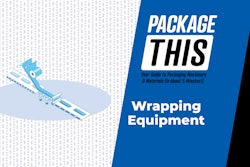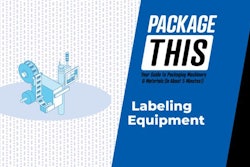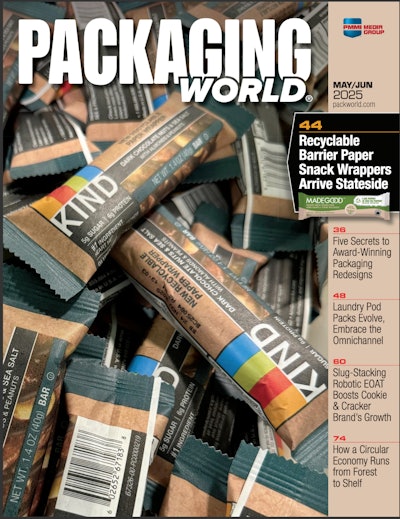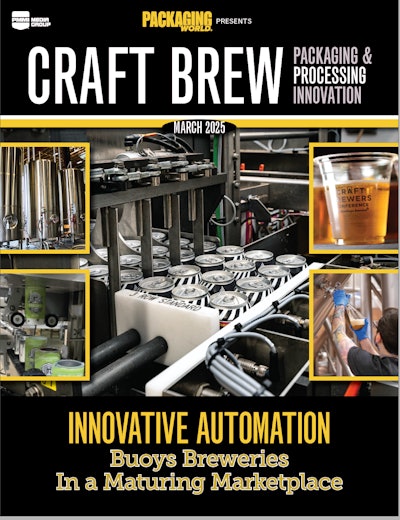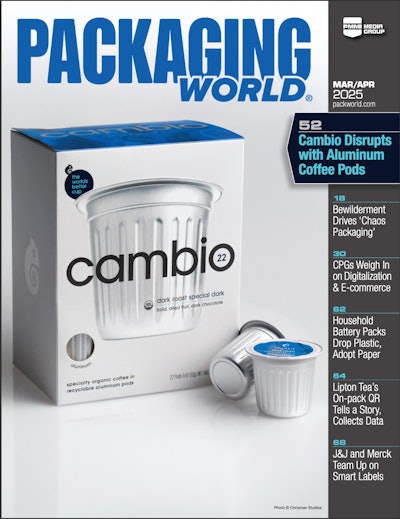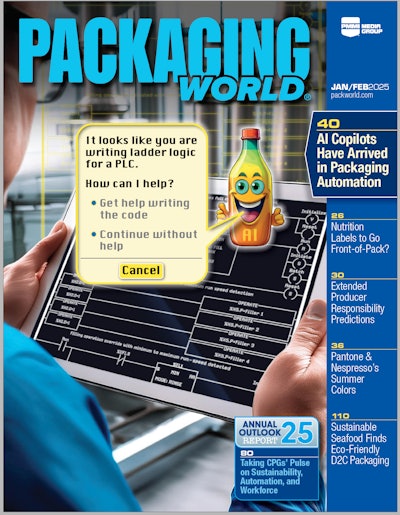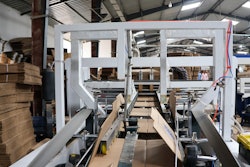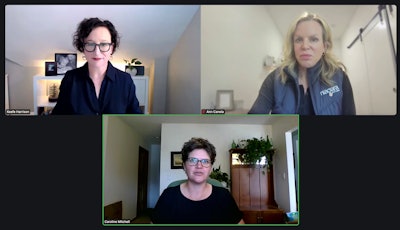
With a renewed sense of urgency around building a more effective U.S. recycling system, The Recycling Partnership (TRP) kicked off a five-part webinar series yesterday spotlighting the people, policies, and partnerships driving meaningful change on the ground. This first session, titled, “Community Recycling Programs: How Can We Take Recycling from Surviving to Thriving?,” brought together a diverse panel of voices working to reimagine what effective recycling looks like in communities across the country.
The hour-long discussion featured perspectives from municipal leaders, corporate sustainability executives, and recycling specialists, all grappling with the same question—How can we turn well-meaning but often fragmented local recycling systems into cohesive, high-performing engines of circularity?
 | Read this related article, “The Recycling Partnership Launches the Recycling Program Solutions Hub Nationwide” |
What emerged was a clear consensus: Recycling is local, but the solutions must be systemic. Whether it’s improving access, rethinking packaging design, engaging communities, or driving policy change, every stakeholder has a role to play. And the path forward will require collaboration, creativity, and, above all, sustained investment.
“This isn’t about flipping a switch,” said Keefe Harrison, TRP CEO and moderator of the event. “It’s about building durable systems that work for everyone.”
The case for systemic support
Harrison first set the stage for the discussion, noting, “With more than 9,000 local recycling programs across the country and an average recovery rate of just 23%, the U.S. system isn’t broken—it’s underbuilt.”
To move forward, Harrison emphasized, stakeholders must understand what a functional recycling system requires. This includes design for recycling, access for all households, active participation, robust sortation infrastructure, and end markets that ensure old materials become new again. “It’s about connecting all five parts of the system and addressing each area strategically,” she told the more than 1,000 webinar attendees.
 Harrison provided an example of how TRP works backwards from desired outcomes to identify roadblocks to recycling. Image courtesy of The Recycling Partnership.
Harrison provided an example of how TRP works backwards from desired outcomes to identify roadblocks to recycling. Image courtesy of The Recycling Partnership.
Harrison highlighted how TRP works backwards from desired outcomes to identify roadblocks. “We ask, ‘What must be true?’ and then we target the gaps. Whether it’s packaging design, local access, public engagement, or infrastructure, we use data to focus where change is needed most.”
To illustrate this point, Harrison shared an example from California. “Take PET thermoforms—those clear plastic clamshells for salads and sandwiches. They’re technically recyclable, but in California, only 82% of households have access to recycle them,” she explained. “Then just 23% of consumers actually put them in the bin, and even fewer of those are successfully sorted at the MRF. That leaves a big gap before we ever get to the end market,” she said. “It’s a clear example of how access, behavior, infrastructure, and end-market demand all need to align.”
A mayor’s view: leading through contracts and community engagement
New Orleans Mayor LaToya Cantrell joined the webinar to share how her city is rebuilding trust in recycling through contract reform, federal partnerships, and community education.
“It’s been a challenge,” Cantrell acknowledged, “but by rebidding our waste contracts, shifting to an opt-out model, and securing a $4 million federal grant, we’ve been able to restore curbside recycling in a way that works for residents.”
 TRP has collected data on recycling rates for all 50 states. Image courtesy of The Recycling Partnership.
TRP has collected data on recycling rates for all 50 states. Image courtesy of The Recycling Partnership.
Cantrell noted that access and engagement go hand in hand. “We made recycling the default—not something people had to sign up for. And we gave them the tools they needed. That’s when participation started to rise,” she shared.
Youth involvement has also become a pillar of New Orleans’ strategy. “Our young people want to lead,” she said. “Through our Youth Climate Action grants, they’re developing projects focused on sustainability and recycling. They’re bringing adults along with them.”
From philanthropy to packaging innovation
Representing the private sector, Ann Canela, head of Niagara Cares at Niagara Bottling, discussed how the company is addressing recycling from multiple angles, starting with product design, community partnerships, and data-driven behavior change.
“We’re the first to market with a label-free bottle [in Southern California] designed for 100% recyclability,” Canela said. “That’s a major milestone for us. But it’s just one part of the solution.”
She explained that true impact comes from looking at the full ecosystem. “It’s not enough to make a recyclable product if there’s no infrastructure to recycle it, and no one knows what to do with it. That’s why we’re partnering with The Recycling Partnership to support local programs and better education.”
In Texas, Niagara used data from TRP’s heat map to identify areas where investments could make the biggest difference. “We zeroed in on Texas because of the volume of waste and lack of access,” Canela noted. “From there, we funded initiatives like new recycling carts, infrastructure, and targeted community campaigns.”
One standout initiative was the launch of the Love Where You Live campaign in Austin. “It’s a communications effort built on empathy and simplicity,” said Canela. “What we learned is that people respond better when you start with empathy. Telling people, ‘We know it’s confusing’ is more effective than lecturing. That message builds trust.”
She added, “We’re shifting from logic-based appeals—‘Recycling is good for the planet’—to emotion-driven ones that connect with people’s pride in their neighborhoods. That’s a big mindset change in our communications.”
Niagara is also investing in broader technological and educational platforms, such as AI-based tools to improve recycling accuracy and campaigns to normalize participation. “It’s about making recycling feel like second nature,” said Canela. “That’s how you create sustained behavior change.”
A ground-level perspective from Fort Collins
Caroline Mitchell, lead waste reduction and recycling specialist for the City of Fort Collins, Colo., provided insight into how local programs evolve incrementally.
“There are no light switches in this work,” said Mitchell. “Recycling programs grow one contract, one policy, one cart at a time.”
Fort Collins, she explained, has spent over 30 years developing a robust municipal recycling system. “We didn’t start with a sophisticated program,” she said. “It was about recognizing one opportunity at a time and building from there. Every community has a different starting point, and that’s okay.”
Colorado’s recent adoption of extended producer responsibility (EPR) legislation is expected to be a game changer. “Beginning in 2026, producers will fund the collection, processing, and education for recycling services statewide,” Mitchell explained. “For some communities, this will mean access to recycling for the first time.”
 | Read this related article, “Packaging Recycling Summit Recap” |
She emphasized that the law not only expands service, but also simplifies it: “For the first time, we’ll have a statewide minimum list of recyclable items. That kind of consistency is critical for improving public understanding and participation.”
Mitchell also stressed the importance of public education and trust. “There are so many misconceptions,” she said. “People ask, ‘Does this really get recycled?,’ and the truth is, if it’s on your local accepted list and you’re putting it in the right bin, then yes, it does. But we have to keep reinforcing that message.”
She added, “There’s a lot of skepticism out there, and some of it is understandable. But that’s why it’s even more important that we communicate transparently and consistently. When residents trust the system, they participate in it.”
Aligning policy and practice
As the session concluded, panelists reflected on what must happen next to push community recycling from surviving to thriving.
“We need catalytic investments—not just in infrastructure, but in people and partnerships,” said Canela.
Mitchell urged local governments to take incremental steps. “Start with where you are,” she said. “Build a strong contract. Educate your residents. Then take the next step."
And Harrison called on every stakeholder to take action: “Companies must design better. Communities need support. And policymakers must lead. Everyone has a role.”
The next sessions in TRP’s webinar series will tackle materials recovery facilities (MRFs), packaging design, end markets, and policy. PW









